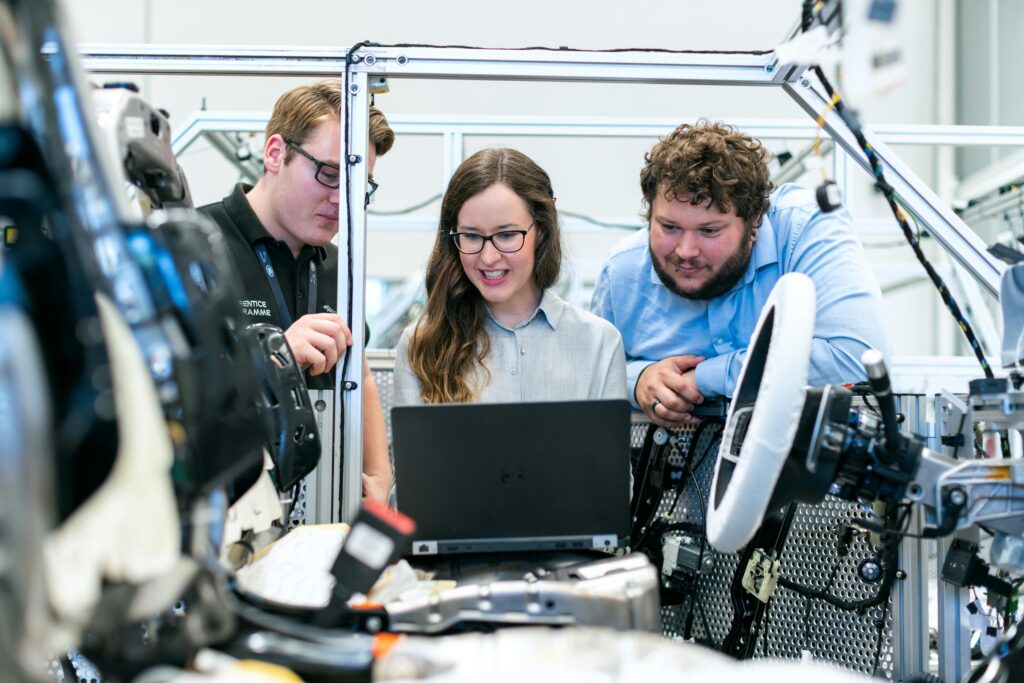Vehicles are becoming extensions of the home – smarter, quieter, and tailored to daily routines. Power steps lower to greet kids, liftgates open hands-free with groceries, and tonneau covers seal cargo at the tap of a button. Behind these smooth motions sit compact drives that translate electrical power into precise push–pull movement. For homeowners who care about usability and long-term value, electromechanical actuators are a practical gateway to comfort, accessibility, and curb-appeal tech that feels premium without a dealership price tag.
The appeal isn’t only convenience. Consistent, repeatable motion reduces strain on hinges, limits slam damage, and makes storage spaces safer to access. Well-planned upgrades also align with the broader smart-home ecosystem – garage, driveway, and vehicle interacting on a single routine instead of fighting for attention.
From comfort to capability: where actuation shows up
Modern vehicles hide motion in plain sight. Seats glide into memory positions, third-row benches fold flat, and liftgates stop exactly where low ceilings demand. In the aftermarket, owners are extending those wins to cargo, camping modules, and accessibility gear. Mechanisms like automotive actuators deliver straight-line force on different options: linear drives to raise, slide, or lock; compact controls to coordinate travel; and safety features that halt movement the moment resistance spikes.
This is everyday utility, not show-and-shine. Motion that feels effortless translates into fewer awkward bends, less ladder time on overlanding rigs, and less hassle loading strollers, tools, or groceries. The best installs read as factory-clean, even when they were planned at a workbench in the garage.
Why electromechanical wins in the driveway
Hydraulic and pneumatic systems have their place, yet electromechanical drives fit homeowner projects because they’re tidy, low-maintenance, and easy to wire. Force is transmitted through a screw or belt, allowing for accurate position sensing, and motion profiles are easily shaped–with soft starts to protect hinges and soft stops to avoid jolts. When a compact, fast unit is required for lids, sliders, or lifts, a purpose-built electromechanical Linear Actuator provides predictable travel and holding power without fluid mess or compressor noise.
Installation is approachable. A fused 12 V feed, a protected run to the controller, and weather-conscious routing are usually enough to get moving. With feedback-ready models, synchronized motion becomes practical – twin drives lifting a drawer or platform in unison instead of racking under uneven loads.
Practical upgrades that punch above their size
Automotive motion projects pay off fastest when they target daily friction. These ideas adapt well to SUVs, pickups, family minivans, and camper conversions:
- Lift-assist for roof boxes or kayak racks that lowers gear to reach height, then stows it cleanly against the rails.
- Sliding cargo trays in the trunk that extend tools, coolers, or groceries beyond the bumper without heavy lifting.
- Flip-up fridge or camp-kitchen lids in overlanding builds that hold any position and close softly.
- Power tonneau covers that seal tightly against weather and integrate with existing fob or keypad routines.
- Step-through access for third rows – controlled seat travel that creates a wider, safer path for kids and guests.
- Discreet amp or recovery-gear compartments that open on a short press, then auto-lock once closed.
Each project benefits from the same fundamentals: clean force alignment, protected wiring, and clear stop logic. When those pieces are right, the rest feels simple.
Smart-home harmony without the clutter
Vehicles and homes now share one calendar – departures, deliveries, practices, and store runs. Electromechanical motion fits that rhythm because it plays nicely with triggers and scenes. A garage-door open event can cue a liftgate to rise to a preset height. A geofenced arrival can crack a canopy for quick loading, then close before the garage lights shut off. Voice routines execute hands-free when arms are full. Privacy and security stay intact by limiting remote commands to parked states and requiring press-and-hold for potentially risky moves.
On resale, small touches matter. Buyers notice clean wiring looms, labeled switches, and motion that feels OEM. Utility upgrades – not flashy gimmicks – signal care and craft. A trunk that slides out to meet the user, then tucks away silently, reads as a lifestyle improvement rather than a one-off mod.
Safety, wiring, and weathering – the quiet wins
Motion becomes trustworthy when the “boring” details get attention. Mounting geometry should keep the line of force straight through the toughest part of the move – lids often need brackets positioned to pass close to the center of gravity during opening. Current sensing and limit switches prevent over-travel and pinch scenarios. In shared family vehicles, child-safe logic – press-and-hold to move, auto-stop on resistance – reduces accidental activation.
Wiring deserves the same respect as the hardware. Use abrasion sleeves near hinges, grommets at pass-throughs, and drip loops to shed water. Ground points must be clean and corrosion-protected. For exterior installs, look for housings and connectors with appropriate sealing – IP ratings are helpful guides – and route harnesses away from hot exhaust and moving suspension. A seasonal once-over – bolt torque check, dust wipe on exposed shafts, and a quick cycle test – keeps motion quiet year after year.
The road ahead: modular motion for everyday mobility
The next wave of automotive automation will feel less like gadgets and more like thoughtful furniture that happens to roll. Seats that meet the body instead of asking the body to adapt. Cargo spaces that present tools at wrist height, then vanish into clean lines. Accessible travel that removes barriers without drama. Electromechanical actuators enable that future because they combine precision, control, and serviceability in compact packages.
For homeowners and builders, the blueprint is simple – choose a motion that solves a real problem, size it with honest margins, and install as if the next owner will thank you. Do that, and the vehicle becomes a smarter room of the house: responsive, reliable, and ready to move exactly when life asks it to.


 Reginae Daviester has been a key contributor to the success of Residence Resale Tactics, leveraging her creativity and dedication to help build a platform that serves as a comprehensive resource for real estate professionals. Her role as a helper involves crafting innovative ideas and supporting content development, ensuring the platform remains engaging and valuable for its audience. Reginae’s passion for real estate is reflected in her commitment to delivering high-quality insights that empower users to navigate the market effectively.
Her diverse skill set and willingness to take on new challenges have been vital to the project’s growth, enabling Residence Resale Tactics to expand its offerings and maintain its status as a leading resource. Reginae's enthusiasm and forward-thinking approach continue to inspire the team, contributing significantly to the platform's ongoing evolution and impact in the real estate community.
Reginae Daviester has been a key contributor to the success of Residence Resale Tactics, leveraging her creativity and dedication to help build a platform that serves as a comprehensive resource for real estate professionals. Her role as a helper involves crafting innovative ideas and supporting content development, ensuring the platform remains engaging and valuable for its audience. Reginae’s passion for real estate is reflected in her commitment to delivering high-quality insights that empower users to navigate the market effectively.
Her diverse skill set and willingness to take on new challenges have been vital to the project’s growth, enabling Residence Resale Tactics to expand its offerings and maintain its status as a leading resource. Reginae's enthusiasm and forward-thinking approach continue to inspire the team, contributing significantly to the platform's ongoing evolution and impact in the real estate community.